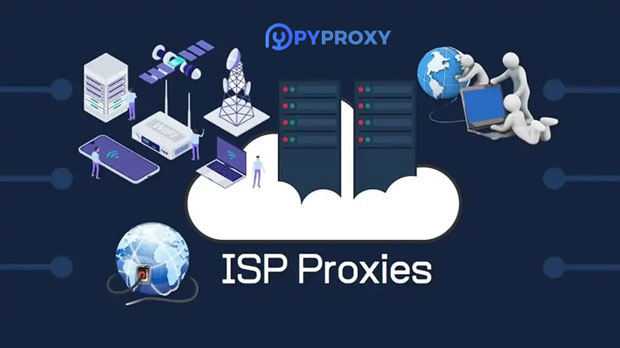A proxy is an intermediary server that sits between a user's device and the internet. It acts as a gateway, facilitating communication between the two by forwarding requests and responses. In simple terms, when a user connects to a website through a proxy server, the server acts on their behalf, masking their IP address and providing an additional layer of security. The proxy server receives the request from the user, sends it to the destination server, and then forwards the response back to the user. This process can be used for various purposes, including enhancing privacy, accessing restricted content, and improving network performance. Understanding the Proxy: Basic FunctionalityA proxy server is essentially a relay station between the client (the user’s device) and the internet. When a client makes a request to access a website or a service, the proxy server intercepts the request, processes it, and then forwards it to the destination. Once the destination responds, the proxy sends the data back to the client. The key point is that the destination server never directly interacts with the client’s device; instead, it only communicates with the proxy server. The proxy server can modify the request and response in various ways, depending on its configuration. It can cache responses, thereby speeding up access to frequently visited websites, or filter content to block access to certain sites. Additionally, it can conceal the identity of the user by masking their IP address, providing anonymity and security.Types of Proxy ServersThere are several types of proxy servers, each serving a specific purpose based on the needs of the user or the organization. Below are the most common types:1. Forward Proxy A forward proxy is the most common type of proxy. It is used by clients (users) to access the internet, typically for purposes such as browsing or accessing external services. The forward proxy serves as an intermediary between the user and the internet. It hides the client’s IP address and can be configured to filter content or monitor user activity.2. Reverse Proxy Unlike a forward proxy, which works on behalf of the client, a reverse proxy operates on behalf of the server. It sits between the client and the server, often used by web servers to handle incoming traffic and distribute requests to different backend servers. Reverse proxies are commonly used for load balancing, security, and caching.3. Transparent Proxy A transparent proxy is one that does not alter the request or response, and the client is typically unaware that they are using a proxy. These proxies are often used by organizations to monitor or filter internet traffic without requiring any user configuration.4. Anonymous Proxy An anonymous proxy hides the client’s IP address to provide anonymity while browsing. It is often used by individuals seeking privacy on the internet. This type of proxy does not send identifying information to the destination server, thus allowing users to browse without revealing their location.5. High Anonymity Proxy A high anonymity proxy takes anonymity to the next level by not only hiding the client’s IP address but also preventing the destination server from detecting the use of a proxy. This is often used by users who require a higher level of privacy and security.How Proxy Servers WorkTo understand how a proxy works, consider the process step by step:1. Client Request The process starts when a client (the user) sends a request to access a website. Instead of contacting the website directly, the request is sent to the proxy server.2. Proxy Processing The proxy server receives the client’s request and determines how to handle it. Depending on the configuration, the proxy may choose to block, modify, or forward the request. It may check for security issues, such as malware or blacklisted websites, or it might cache the data to improve response time.3. Forwarding the Request If the proxy server forwards the request to the destination, it hides the client’s IP address, ensuring that the destination server cannot trace the request back to the client. This is an important feature for enhancing user privacy.4. Receiving the Response Once the destination server responds to the request, the proxy server receives the data and processes it. It can again filter, modify, or cache the data, depending on its settings.5. Sending the Response to the Client Finally, the proxy server sends the response back to the client. For the client, the process appears as though the request was directly fulfilled by the destination server. However, in reality, the proxy server has played a crucial role in the communication.Applications of Proxy ServersProxy servers are used in a variety of scenarios, each benefiting from the unique functionalities that proxies provide. Some common use cases include:1. Improving Security One of the main advantages of using a proxy is enhanced security. By masking the client's IP address and acting as an intermediary, the proxy server can protect the client from potential threats, such as hacking attempts, malicious software, or phishing attacks.2. Bypassing Geo-restrictions Proxies are commonly used to bypass geo-restrictions. By masking the client’s IP address and making it appear as though the request is coming from another location, users can access content that is restricted in their geographic region. This is commonly used to access streaming services or websites that are not available in certain countries.3. Monitoring and Filtering Traffic Organizations often use proxies to monitor and filter internet traffic. This can be done to ensure that employees are not accessing inappropriate content, to improve network performance, or to enforce security policies. Transparent proxies are particularly useful for this purpose.4. Load Balancing and Caching In high-traffic websites and services, reverse proxies are used for load balancing and caching. Load balancing helps distribute incoming traffic evenly across multiple servers, ensuring that no single server is overwhelmed. Caching reduces the load on backend servers by storing copies of frequently accessed content.5. Anonymity and Privacy For users who value privacy, proxies offer a way to browse the internet anonymously. By using an anonymous or high-anonymity proxy, users can hide their IP address and protect their identity while browsing.Benefits and Drawbacks of Proxy ServersWhile proxy servers offer numerous benefits, they are not without their drawbacks. Below are some advantages and disadvantages of using proxies.Benefits:- Improved Privacy and Security: Proxies can enhance user privacy by masking IP addresses and preventing tracking.- Access to Restricted Content: Proxies can bypass geographical restrictions, allowing users to access region-locked content.- Network Optimization: Proxies can improve network performance by caching frequently requested data, reducing load times.Drawbacks:- Reduced Speed: Depending on the proxy server’s configuration and location, using a proxy can sometimes slow down internet speeds.- Potential for Misuse: While proxies offer anonymity, they can also be used for malicious purposes, such as bypassing security protocols or committing illegal activities.- Reliability Issues: Some proxy servers may not be reliable or secure enough, especially free ones, which may compromise data security.ConclusionProxy servers serve as an invaluable tool for enhancing security, improving network performance, and providing anonymity online. Whether for personal use, business purposes, or to bypass restrictions, proxies offer versatile solutions in a wide range of scenarios. However, it is important to be aware of the potential risks and limitations, especially when choosing a proxy service. The key to utilizing proxies effectively lies in selecting the right type of proxy for the task at hand and ensuring that security and privacy are always maintained.
Jun 19, 2025



































































